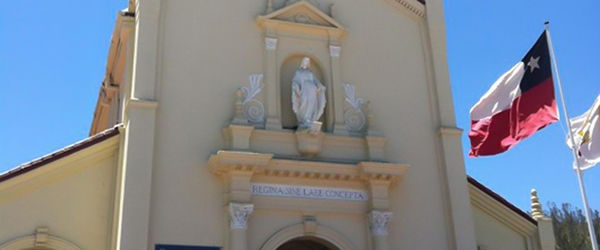The May 24 event, held at St. Thomas the Apostle School near downtown Los Angeles, offered an opportunity to announce the one-year-old St. Isidore technology pilot project that will run through 2013. It involves updating Internet connectivity and use of hardware and software in 25 different locations across the archdiocese, including 11 elementary schools, two high schools, nine parishes, a school of ministry, the Archdiocesan Catholic Center and the San Fernando Region office. “It is an exciting time because we’re looking at a variety of different things to really creatively begin to think how we can change evangelization, education and teaching in the archdiocese, using new devices and hardware,” said Kevin Baxter, archdiocesan superintendent of Catholic elementary schools, in introducing the new task force that he chairs.Other members of the group include Marge Graf, general counsel for the archdiocese; Father David Loftus, adult education coordinator in the Office of Religious Education; Mike Norman, ORE associate director for youth ministry; and Margaret Sardo, San Fernando Region religious education coordinator.Baxter asked participants to think on how to start using the new hardware and software beyond the idea of “having to have a device in our hands.”“This is about a mind shift,” he said, “a shift in thinking, a shift in approach and a shift in attitude.” He urged the adult audience to “relax” when thinking about the “huge” generational gap regarding technology.“We are never going to be where the kindergartner is,” he admitted, “but we can start tapping into the different resources and utilize them to do our work.”The pilot project and the vendor fair was put together in partnership with CLEAR, a high speed internet connectivity (WiMAX) provider, and processor technology developer Intel Corp.The eventual C3 plan is to provide access to and availability of technology and tech-resources for every parish and school throughout the archdiocese, setting a path by “zooming into the 21st century and meeting young people where they are,” said Religious Sister of Charity Edith Prendergast, director of the Office of Religious Education.Rather than waiting to see where the digital road will lead in terms of catechesis and the ministries that religious education serves, the archdiocese is offering an opportunity to create the path, she said.During the fair, school and parish leadership tried out the latest hardware (tablets and hand-held devices, among others) and software offered by 22 vendors, including Apple, Intel, Random House, Sprint, Veritas Religion, Clearwire, Insight and others, and viewed the latest online resources, such as ministry and catechetical programs.Getting “an overall sense” of how to use the new technologies for pastoral ministry was Father Richard Vega, president of the Chicago-based National Federation of Priests’ Councils whose theme for its April 2012 conference is the “Emerging Church of the 21st Century and the use of technology.”“[Technology] is still an unchartered territory for a lot of priests,” said Father Vega, a priest of the L.A. Archdiocese who will return to California in July 2012 after completing his term as the head of the priests’ organization. “I’m here to learn how these can be used as pastoral tools in communicating with our parishioners,” Father Vega noted. “Many young parishioners are using smart phones and we can get some ideas of how to use these devices in our parishes. This is where the church will be tomorrow and we really need to get on board. This is a womb-to-tomb experience that we have to figure out how to do.”Checking new software to use in the classroom were Norma Moreno and Jennie Lee, principal and vice-principal, respectively, at St. Gertrude School, Bell Gardens.“We wanted to purchase smart boards, but at this point we’ve been told they’re getting obsolete, so we’re looking to integrate the iPads,” Lee said.Asked about the cost of introducing the new gadgets and high speed connectivity, Moreno said the key is in educating the parents first and “getting their buy-in.” “Once we achieve this it should be easy because the kids in general love technology,” she said. “That’s what they [the students] are waiting for and it’s up to us, the teachers and principals, to meet the task.”One idea of how to make it cost-effective, she said, is to develop payment plans that are integrated into tuition fees and broken into monthly payments.The use of the new technologies promises to be teacher-friendly and cost-effective (iPads used by pilot schools will have an approximate cost of $20 per student; Sprint is offering a $149.99 Galaxy tablet, down from its store cost of $199.99, and a $149.99 notebook, down from $600.)According to Baxter, in the next three to four years most young people will be carrying their own smart phones that, if used creatively in the classroom, can alleviate costs to schools or other locations.For more information on the Catholic Communications Collaboration Task Force, call Dr. Kevin Baxter at (213) 637-7328. {gallery width=100 height=100}gallery/2011/0603/taskforce/{/gallery}

